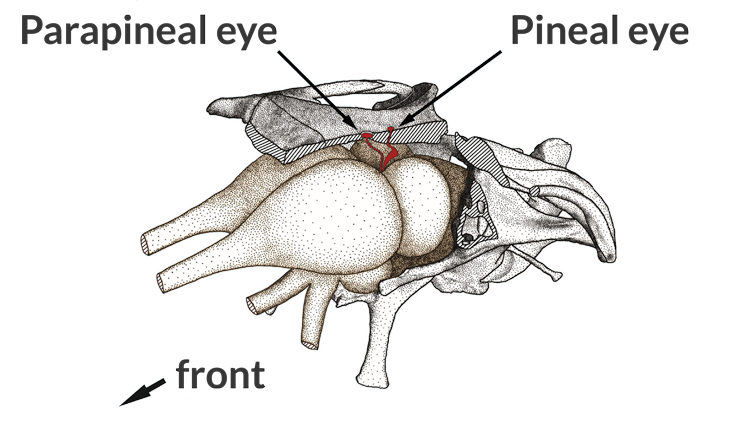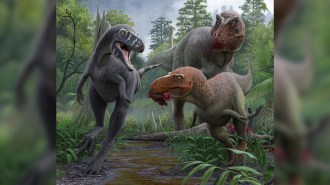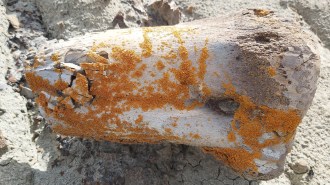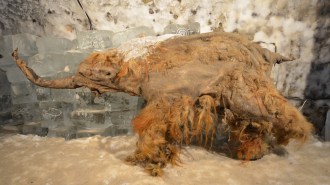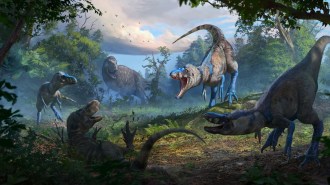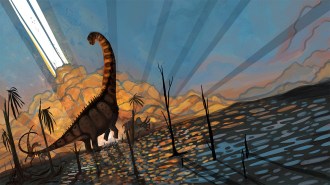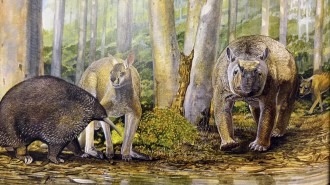This ancient lizard may have watched the world through four eyes
A fossil of the monitor lizard’s skull reveals two holes for the photosensory structures
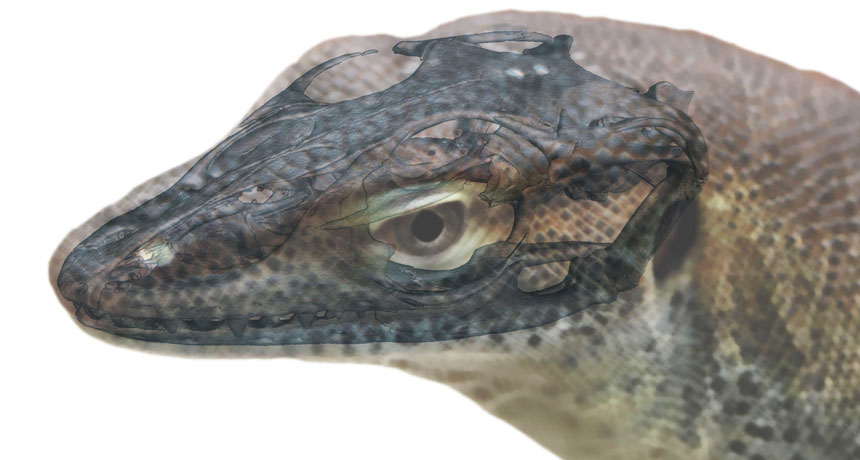
ANCIENT LIZARD Four-eyed Saniwa ensidens, which lived 50 million years ago, closely resembled the modern monitor lizard Varanus mertensi, shown here with an overlay of the skull of S. ensidens.
A. Lachmann/Senckenberg Gesellschaft für Naturforschung/Digimorph.org
